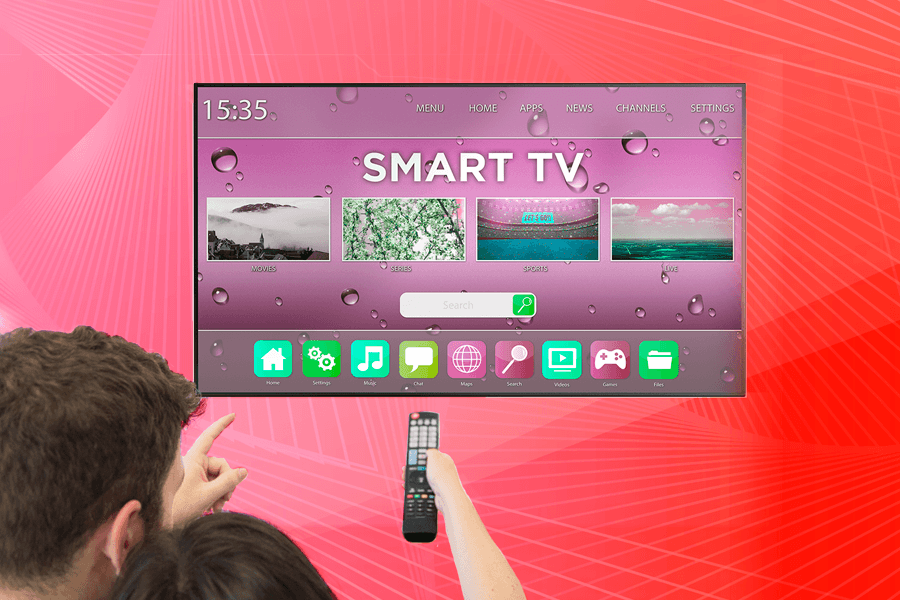09 November 2021
Smart TV’s Bright Future in Indonesia
Remember the movie Back to the Future? The second part predicted that by 2015, we would have flying cars and flying skateboards (yes, we know it’s called hoverboards). Sadly, the predictions don’t come true. As of 2021, we’re all sitting on our couches instead of driving a flying car or exploring the outdoors with a hoverboard. The movie predicted something right, though: that we would get upgrades on our home appliances. We’ve seen swift growth in the development of smartphones over the past few years, and now our TVs are also getting an upgrade.
Shifts to Smart TVs, Surges in the Smart TV Market
Our newfound enthusiasm for smart TVs supports the growth of the very industry. Some predicted that there will be a 17.8% CAGR growth for the global smart TV market from 2021 to 2027, with a significant 30.7% CAGR spike in 2021, thanks to the pandemic-driven trends of physical/social distancing and remote working. The market value is projected to almost reach $285 million in 2025. Following the global trend, Smart TV market CAGR in the Asia Pacific will grow by 8.8% between 2017 and 2023.
And it seems that the Indonesian market also catches up to the trend really quick, allowing Smart TV producers to release new products for Indonesian households. While conventional TVs still lead the industry, smart TV is slowly but surely gaining the attention of Indonesian people. In August 2021, a new smart TV was launched by Realme. Quite recently, Sharp has also launched a smart TV with 8K resolution. Samsung smart TV market in Indonesia also experienced a 44-percent growth in the second quarter of 2020. All the aforementioned data points to a bright future of both the global and national Smart TV markets.
Possible Factors that Facilitate the Growth of Smart TV in Indonesia
What factors support the Smart TV market growth in Indonesia? Well, we can speculate a few. First, the need for entertainment in a post-pandemic setting increases in Indonesia just like it does in many other parts of the world. As our mobility is restricted, many of us get bored. And this boredom prompts us to seek better experiences of entertainment, one of which is by watching our favorite contents on a bigger screen. Here, Smart TV provides not only an alternative entertainment device, but also an upgraded watching experience.
Better internet accessibility also might be a factor that provides opportunities for the Indonesian Smart TV market. In early 2021, 202.6 million Indonesians are connected to the internet. The number shows a 27-million (16%) growth from 2020. This is supported by how Indonesian Internet coverage area nearly reached 74% in the beginning of this year. With more people connected to the internet, the opportunities for Smart TV market increase, given that Smart TVs rely heavily on their users’ internet access.
There’s also active consumption of Internet content (especially videos) among Indonesians. Simon Kemp found that TikTok last year (2020) had 22 million active Indonesian users, making Indonesia the country which composes the second largest user base for the platform. Indonesia also provides the biggest market for YouTube, with a penetration rate of 94%. Such video-watching obsession might also pave the way for the growth of Smart TV, where contents from the internet can be watched on a screen bigger than that of a smartphone.
Last but not least, VOD platforms have been gaining traction among Indonesian users. In January 2021, about 2.5 million Indonesian users subscribed to Disney+ Hotstar. Meanwhile, 1.5 million and 1.1 million Indonesians subscribe to two Southeast Asian video platforms, namely Viu and Vidio. Netflix just falls short slightly with 850,000 active subscribers. Also catalyzed by the pandemic, the popularity of VOD services in Indonesia may also facilitate the growth of the Indonesian Smart TV market.
Smart TV Shines On
Smart TV is slowly but surely entering the Indonesian market, and their arrival gradually shifts people’s perspective on entertainment media. Data has shown that the Smart TV market will keep on improving until at least a few years from now. The need for new entertainment media, internet availability, our watching culture, and the development of VOD platforms among Indonesians provide a fertile soil for Smart TVs to continue their presence in Indonesia. If the trend continues, Smart TV market will be full of bright opportunities in the future.
Is this information helpful?
